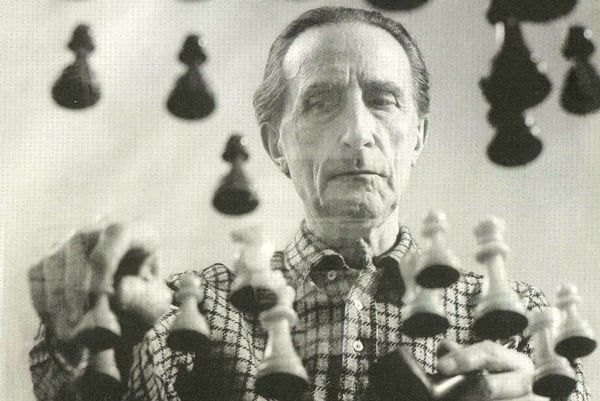Formidable and preternaturally glamorous, those models and their synthetic pop-culture kin may well inspire envy and a covert urge to merge with the machine. But they also spawn the kind of dread that’s been rivaled of late only by the walking dead.
Sleeker, smarter and more coolly efficient than their human counterparts, these next-generation bots (played by flesh-and-blood humans) boast advanced motor skills, superhuman consciousness and even subtle facial tics that mimic those of their makers.
What’s more, they’re better looking. In “Humans,” the so-called synths were conceived to look like “almost-perfect humans,” said Vickie Lang, who created their hair and makeup. The fastidiously groomed synth women “never touch their hair,” she said. “Their skin is a little silicone-y.”
In contrast, their masters seem as chaotically thrown together as week-old bed linens. “We left them a little disheveled,” she said.
Hard-put to compete, a rumpled police detective in the series is driven to moan distractedly: “I’m an analog man in a digital age. I’m redundant.”
His remark encapsulates the persistent anxiety being mined by the filmmakers of “Ex Machina,” in which a comely android (Alicia Vikander) outmaneuvers her creator; “Terminator Genisys” and “Mad Max: Fury Road,” in which the fearsome Imperator Furiosa (Charlize Theron) vanquishes her enemies with a robotically wired prosthetic arm.
Similar fears, coupled with a rising fascination, have been tapped in a wave of young-adult fiction, notably “The Lunar Chronicles,” the Marissa Meyer fantasy series detailing the adventures of a cyber-Cinderella.
Pure sci-fi? Not necessarily. As Sidney Perkowitz, a physicist and the author of “Digital People: From Bionic Humans to Androids,” wrote in an email, “the new angle is the growing realization that robots could become more than barely smart enough to do simple tasks (remember when Roomba was a big deal, just for its ability to clean floors
without human guidance?)”
These days, he added, “their chips meet a true cognitive challenge by solving complex and shifting situational problems in real time.” The upshot: “Artificial brains could become plenty smart enough to handle all of a robot’s physical actions.”
And usurp human functions, as well. In a sense, synthetics that look like people, think like people and even “feel” the way that people do, reading emotions and simulating human empathy, already exist.
Pepper, a silicone humanoid manufactured by
SoftBank Robotics Corp., and billed as “the world’s first emotional robot,” is a novelty home companion with coin-dot eyes and articulated limbs, and carries a price tag of $1,600. The costly but friendly machine sold out within one minute of its introduction in Japan in June.
“Some people think robots will be better at basically everything, maybe even creativity,” said Martin Ford, the author of “Rise of the Robots, Technology and the Threat of a Jobless Future.”
In his book he speculates that rising up alongside a new generation of worker-bots overhauling the economy may be an army of artist-bots that can act or make music. “Humans,” he suggested in an interview, “seem destined not to be competitive at all.”
Some members of the fashion tribe have already assigned mere mortals a kind of B-list status. In a Steven Klein photo shoot in the current Vogue, drones hover overhead, seeming to spy on a party of human models cavorting in a field. For the March issue of W magazine, he portrayed the designer Jason Wu wrapped in the arms of a tin man.
In other images, Mr. Klein’s robots tended to be more lifelike, shown about to copulate or otherwise merge with their human partners in settings as alienating and austere as a surgery. They comment on fashion’s willful embrace of artifice, and as Mr. Klein said, on the dehumanizing aspects of digital manipulation in photography, which, he said, “has removed more and more the feeling of skin against skin.”
Fashion’s romance with synthetics has antecedents in the design output of Riccardo Tisci of Givenchy, Donatella Versace and Karl Lagerfeld, each of whom at various times has made reference to the 1927 science fiction spectacle “Metropolis,” that movie’s mechanized central figure whipping her followers into frenzied revolt. Other frequent points of reference include the 1982 movies “Tron,” which inspired Mr. Browne, among others, and “Blade Runner,” which continues to spawn scores of fashion shoots.
More whimsical interpretations of a resurgent trend include a Rodarte collection last year, in which a series of dresses was patterned with “Star Wars” robot stills.
A phalanx of giant techno tin men dominated an installation last spring in the windows of Bergdorf Goodman. Neither menacing nor particularly friendly, “they were oversize toys, really,” said David Hoey, the store’s senior director for visual presentation, “each with a different personality, disposition and story to tell his robot psychiatrist.”
The choreographer Blanca Li emphasized her automatons’ toylike aspects in a performance last spring at the Brooklyn Academy of Music. Featured players in her “Robots” show were toddler-size animatronic figures and dancers shod in, of all things, Louboutin pumps.
Fashion, said Ms. Li, who has collaborated in the past with the designer Azzedine Alaïa, was integral to the performance, expressive of the spirit of the hour.
“More and more we are interacting with all kinds of machines,’” she
told a Style.com writer at the time. Her ultimate goal: “that we forget even for one second that this was a machine.”













































